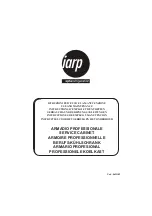
en
30
Max. freezing capacity
Information about the max. freezing
capacity within 24 hours can be found
on the rating plate. Fig.
,
Prerequisites for max. freezing
capacity
■
Switch on super freezing before
placing fresh products
in the compartment (see chapter
entitled “Super freezing”).
■
Removing the fittings
■
The food can be stacked directly on
the shelves and in the bottom of the
freezer compartment.
Note
Do not cover the ventilation slots on
the rear panel with frozen food.
■
Freeze large quantities of food
preferably in the very top
compartment where food freezes
particularly quickly and therefore also
gently.
Freezing and storing
food
Purchasing frozen food
■
Packaging must not be damaged.
■
Use by the “use by” date.
■
Temperature in the supermarket
freezer must be -18 °C or lower.
■
If possible, transport deep-frozen food
in an insulated bag and place quickly
in the freezer compartment.
Note when loading products
■
Preferably freeze large quantities
of food in the top compartment, where
food freezes particularly quickly
and therefore also gently.
■
Do not cover the ventilation slots on
the rear panel with frozen food.
■
Place the food over the whole area
of the compartments or the frozen
food containers.
Note
Food which is already frozen must not
come into contact with the food which
is to be frozen. If required, move
the frozen food to the frozen food
container.
■
To ensure air circulation in the
appliance, insert frozen food container
all the way.
Freezing fresh food
Freeze fresh and undamaged food only.
To retain the best possible nutritional
value, flavour and colour, vegetables
should be blanched before freezing.
Aubergines, peppers, zucchini and
asparagus do not require blanching.
Literature on freezing and blanching
can be found in bookshops.
Note
Keep food which is to be frozen away
from food which is already frozen.
















































